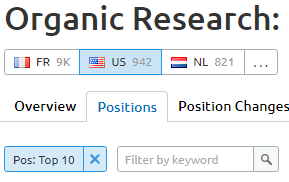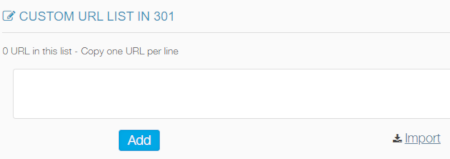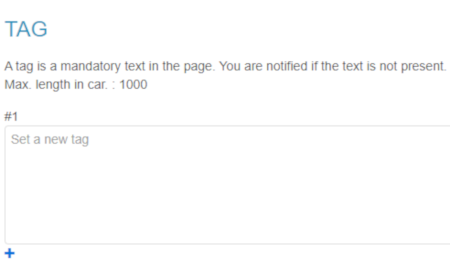A website migration with URL change is one of the most dangerous task for the SEO. Else if everything looks great, you’re not sure to keep your visibility.
The aime of this article is to provide you some actions to realize with Oseox Monitoring and Oseox Sitemap in order to assist you for this difficult task.
Migration & Oseox Sitemap
Verify the new redirections
List all the URL of your website, you can follow our methodology explained here.
If your website is too large and if you don’t have enough quota to monitor all your URL, you can select the URL that rank on top 10, for example by using a filter on SEMrush.

Not much websites have more than 100 000 ranked URL 😉
Normally, all these URL will be redirected and go from 200 to 301. In order to verify automatically the headers each day, you just have to import in 1 click the file with your URL.
Verify the former redirections
Keep the former redirections is a step often forgotten on a website migration… I mean, the redirection created on former rebuild or URL changes.
To avoid this issue, you can begin to collect the redirections on your server and import the list of URL redirected on the dedicated module.

If a redirection disappear during your migration, you will be alerted 😉
Migration & Oseox Monitoring
Oseox Monitoring go further than Oseox Sitemap and can be very useful for website migration. Let me explain why.
Be alerted quickly
SEO can be aware too late when an update is on pre-production or when the update is on production. If the monitoring of the URL is deployed, you have a lot of chances to be alerted before that we ask you to verify !
Follow automatically the headers changes
You can know when the domain name was unavailable and if everything is right. You just have to check your inbox to follow the HTTP header changes.
In most case : 200 -> 503 -> 200 for the homepage, 200 -> 503 -> 301 for internal pages.
disallow: / in robots.txt file
By default, when you add a domain name, Oseox Monitoring will check each hour the robots.txt file. You already have the nightmare to discover the disallow: / of your preproduction on your production environment ? Good news, it’s over and you will be notified very quickly if it happens.
Work by template to avoid structural mistakes
We recommend to add at least 1 URL by template. The websites with more than 25 templates are unusual. Once you have added one URL by template, you can add your top URL, all is explained here.
A SaaS crawler like OnCrawl can help you to go further and test all your URL.
Monitor all your tags
If your website have tracking tags not deployed with javascript, don’t forget to add the by a simple copy / paste on Oseox Monitoring.

Don’t forget to monitor the preproduction environment !
If it’s possible, feel free to monitor your preproduction environment. It’s a good practice to repair some typical issues, for example, a preproduction environment indexed… and duplicated with you production environment…
You can verify the future redirections, the function « custom list of redirections » of Oseox Sitemap can be very useful 🙂
Preproduction test frequency
One of the major feature of Oseox Sitemap and Oseox Monitoring is the test recurrence. The crawlers are essential to test a lot of URL but sometimes it’s difficult to launch a lot of crawlers.
Once configured, Oseox Sitemap will monitor your URL each day and Oseox Monitoring each hour.
If an issue is detected on a update on the preproduction environment, you will be alerted.
At last, you will increase the security level. But sometimes, it’s not possible to check all the URL, so let our tools do it for you. 😉
Conclusion
Oseox Sitemap and Oseox Monitoring are 2 tools very useful to help a SEO for website migration and for each website update in order to secure traffic and avoid SEO nightmare.
Of course, these software as each SEO tool will never replace the work of SEO and developers.





